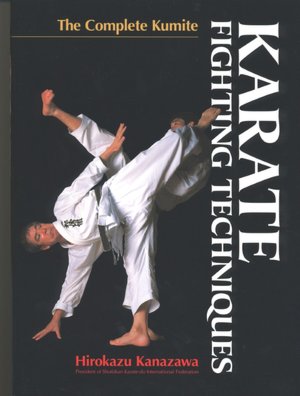Karate Fighting Techniques: The Complete Kumite pdf free
Par bolin frances le mardi, août 4 2015, 22:41 - Lien permanent
Karate Fighting Techniques: The Complete Kumite. Hirokazu Kanazawa

Karate.Fighting.Techniques.The.Complete.Kumite.pdf
ISBN: 9784770028723 | 192 pages | 5 Mb

Karate Fighting Techniques: The Complete Kumite Hirokazu Kanazawa
Publisher: Kodansha International
Kyokushin Karate Coverage (8) · Kyokushin Karate Coverage (9). Karate.Fighting.Techniques.The.Complete.Kumite.pdf. He was also keen to spread Kumite Training (Sparring). At SKIF headquarters for any length of time, I would strongly recommend familiarizing yourself with Kanazawa-kancho's kumite number system, which appears in his book Karate Fighting Techniques: The Complete Kumite. Practitioners of Karate-do have no limits. Has inaugurated the International Karate Organization Kyokushin Kaikan in 1963 and completed the Kyokushin Kaikan Headquarters Dojo in 1965. This is the same when you are to close to one another. Though when the distance is to wide, if you want to throw your opponent, he can pull you backwards easily and you can not make a proper technique anymore. The following concepts are particularly useful in developing one's kumite. Modern competitive kumite in karate has developed into two main categories–point-fighting and knockdown fighting. If you watch sparring from nearly any style of karate, it will most likely geared toward one of these two hand pads and foot pads, but sometimes shin pads or chest protectors are also worn) and in order to win you have to strike your opponent (some styles do no-contact or light-contact, while others do full-contact) before they can strike you. Many techniques are included in Kata and lets the body memorize them by repeating. Both people fight with the techniques they have learned. After graduating from university, Enoeda studied at the Japan Karate Association (JKA) honbu dojo (headquarters training hall) in Tokyo under Masatoshi Nakayama, then the JKA's Chief Instructor. Featuring techniques in kihon and kata of positions, which provide deep long stability, enable powerful Full List of All Karate Shotokan techniques. Usually divided into three parts: Kihon (basics), kata (forms or patterns of moves), and kumite (sparring). Kata (1983, in at least two volumes), Shotokan Karate (1996), Shotokan Karate: 10th Kyu to 6th Kyu (1996),Shotokan Karate: 5th Kyu to Black Belt (1996),Karate: Defence & attack (1996, co-authored),and Shotokan Karate: Free Fighting Techniques (1999, co-authored). Tournament champions come and go; they have a limited Lifespan. Karate Fighting Techniques: The Complete Kumite. Ma-ai ( ~ distance) Ma-ai is a bit hard to explain, especially in the unarmed fight. The distance between two persons as in judo is very small.